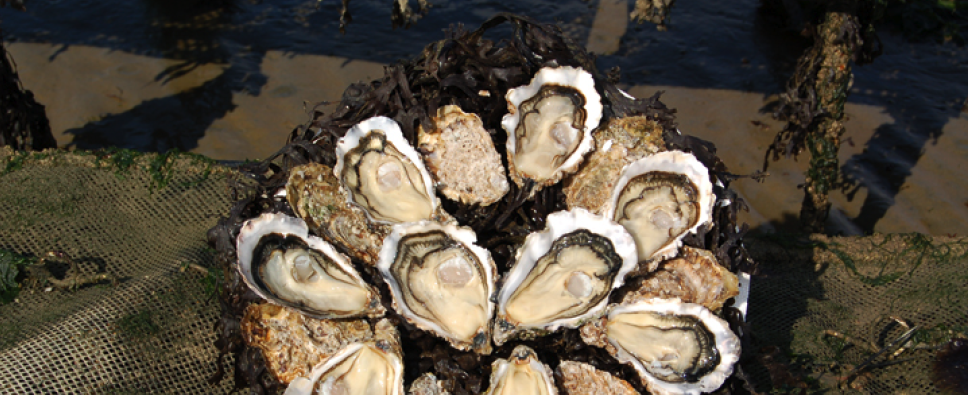Our oysters from Normandy :
We work in a long cycle, meaning that we cultivate our small oysters, called ‘Gratis,’ until they reach marketable size over a minimum cycle of 3 years. We have a small oyster collection park in Charente-Maritime, which allows us to partially produce our own small oysters.
These small oysters are placed in bags whose netting enables the circulation of sea water. The pockets are fixed on iron tables raised about 60 cm above the ground.
Over 3 years the pockets will be worked in 3 different working steps :
- Turning : the bags are regularly turned from May to September; this consists in removing the oysters stuck to the mesh of the bag with a stick but also moving them around in order to obtain a better growth and a more attractive shell shape.
- Sifting : the small oysters are sorted according to their size, then put back into larger bags, reducing the number of bags to give a regular shape to their shell and promote their growth. In order to make the oysters less fragile during this stage, we use a “water sieve”.
- Calibration: this is carried out at the end of the oyster production cycle. For this, we use a grading machine that individually weighs the oysters according to the standards in force. They are put back in pockets numbered from 0 to 5, then put back on the beds before they are sold.
Rising to the level of the foreshore, which is uncovered at each low tide, the oysters are “tricked”, i.e. they are exposed twice a day to an alternation of water (immersion at high tide), sun and wind (at low tide). Frequently subjected to the reflexes of opening and then closing, the muscle that connects the two shells reinforces the oyster’s strength.
During this period, the shell hardens, inside which the flesh achieves its final fragrance.
Once firmly closed, the oyster will thus be able to live outside the water and be conditioned for dispatch.
After a few weeks, they are brought back to the establishment to be soaked at least 24 hours minimum before basketing in natural and decanted seawater basins



